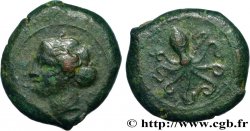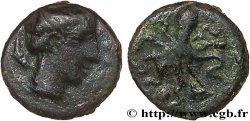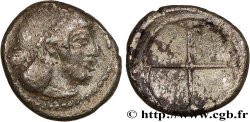bgr_673500 - SICILY - SYRACUSE Litra
Not available.
Item sold on our e-shop (2021)
Price : 450.00 €
Item sold on our e-shop (2021)
Price : 450.00 €
Type : Litra
Date: c. 466-460 AC.
Mint name / Town : Syracuse, Sicile
Metal : silver
Diameter : 12,5 mm
Orientation dies : 9 h.
Weight : 0,79 g.
Rarity : R2
Coments on the condition:
Exemplaire sur un flan large et irréglier, bien centré des deux côtés avec le grènetis visible au droit. Belle tête d’Aréthuse avec les traits archaïsant. Joli revers, finement détaillé. Belle patine de collection ancienne avec des reflets dorés
Catalogue references :
Predigree :
Cet exemplaire provient de la vente Weil de Neuilly d’octobre 2002
Obverse
Obverse legend : ANÉPIGRAPHE.
Obverse description : Tête d'Aréthuse à droite, les cheveux relevés et retenus par un diadème de perles.
Reverse
Reverse legend : LÉGENDE RÉTROGRADE.
Reverse description : Poulpe.
Reverse legend : SU-RA.
Reverse translation : (Syracuse).
Commentary
Poids léger. Expression archaïsante du visage de toute beauté. Ce type avec l’ethnique au revers semble beaucoup plus rare.








 Report a mistake
Report a mistake Print the page
Print the page Share my selection
Share my selection Ask a question
Ask a question Consign / sell
Consign / sell
 Full data
Full data



